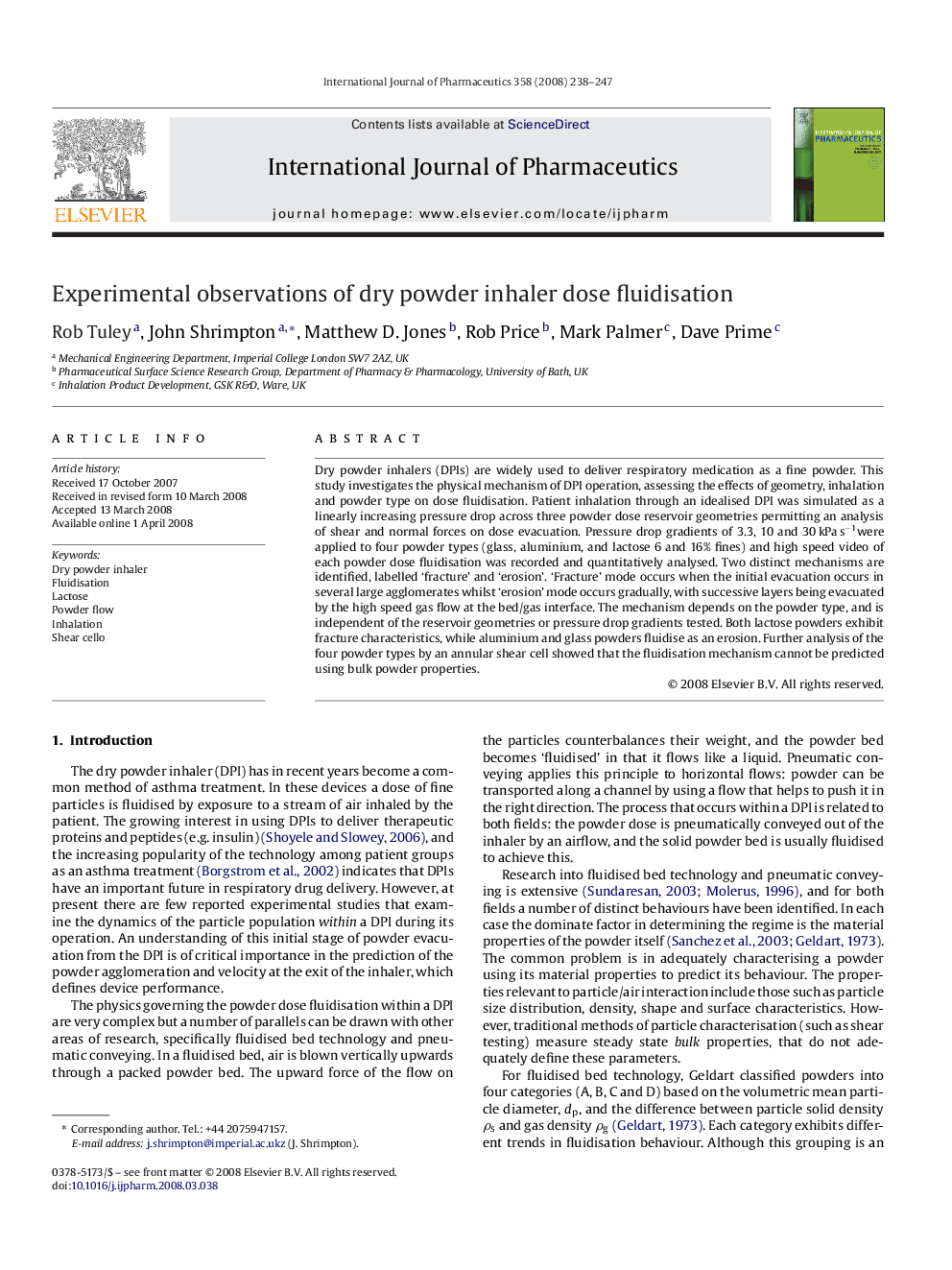| Article ID | Journal | Published Year | Pages | File Type |
|---|---|---|---|---|
| 2505406 | International Journal of Pharmaceutics | 2008 | 10 Pages |
Dry powder inhalers (DPIs) are widely used to deliver respiratory medication as a fine powder. This study investigates the physical mechanism of DPI operation, assessing the effects of geometry, inhalation and powder type on dose fluidisation. Patient inhalation through an idealised DPI was simulated as a linearly increasing pressure drop across three powder dose reservoir geometries permitting an analysis of shear and normal forces on dose evacuation. Pressure drop gradients of 3.3, 10 and 30 kPa s−1were applied to four powder types (glass, aluminium, and lactose 6 and 16% fines) and high speed video of each powder dose fluidisation was recorded and quantitatively analysed. Two distinct mechanisms are identified, labelled ‘fracture’ and ‘erosion’. ‘Fracture’ mode occurs when the initial evacuation occurs in several large agglomerates whilst ‘erosion’ mode occurs gradually, with successive layers being evacuated by the high speed gas flow at the bed/gas interface. The mechanism depends on the powder type, and is independent of the reservoir geometries or pressure drop gradients tested. Both lactose powders exhibit fracture characteristics, while aluminium and glass powders fluidise as an erosion. Further analysis of the four powder types by an annular shear cell showed that the fluidisation mechanism cannot be predicted using bulk powder properties.
